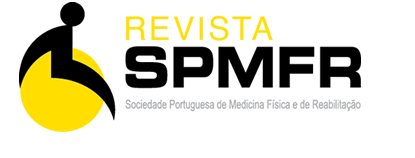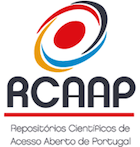Mechanotransduction: The Importance of Stress on Tissue Repair
DOI:
https://doi.org/10.25759/spmfr.254Keywords:
Mechanotransduction, Cellular, Regeneration, Stress, Mechanical, Wound and InjuriesAbstract
In clinical practice, it is usual for clinicians to recommend rest for several days up to weeks following a sports injury. The athlete is frequently advised to remain inactive beyond the acute inflammatory period, often starting rehabilitation several weeks after the injury. Prolonged inactivity is not usually the adequate treatment for muscle, tendon, ligament and cartilage injuries, whether chronic or acute. An extended period of total suspension of the normal mechanical load decreases the structural tissue resistance and may induce acute or chronic lesions when resuming normal sports activity.
In musculoskeletal system pathological conditions, it is important to introduce at an early stage the exact benefic load since excessive or scarce loads may be injurious. In acute lesions, mechanical stress should take place soon after bleeding control and the initial inflammatory stage. The mechanical stimulus’ role on the regulation of cellular and matrix components proliferation and maintenance is important not solely in the bone (as described more than a century ago in Wolff’s law), but in all living tissue, including skin, neural tissue, hematopoietic and musculoskeletal systems. The anabolic and catabolic cellular activity is also regulated by mechanical stress on the cell surface. The conversion process of a mechanical signal in a chemical or biological response is called mechanotransduction.
In this narrative review, the authors address several typical sports injuries affecting different tissues in the musculoskeletal system, for which prolonged rest, although often recommended, has been shown not to be the most appropriate treatment. Finally, they put forward treatment proposals in which the initial rest is replaced by the exact beneficial load, in light of mechanotransduction’s principles.
Downloads
References
Ingber DE. Tensegrity: the architectural basis of cellular
mechanotransduction. Ann Rev Physiol. 1997;59:575-99.
Frost HM. Wolff’s Law and bone’s structural adaptations to mechanical
usage: an overview for clinicians. Angle Orthod. 1994;64:175-88.
Frost HM. Bone “mass” and the “mechanostat”: a proposal. Anat Rec.
;219:1-9.
Squier CA. The stretching of mouse skin in vivo: effect on epidermal
proliferation and thickness. J Invest Dermatol. 1980;74(2):68-71.
Van Essen DC. A tension-based theory of morphogenesis and compact
wiring in the central nervous system. Nature. 1997;385:313-8.
Bates RC, Buret A, van Helden DF, Horton MA, Burns GF. Apoptosis
induced by inhibition of intercellular contact. J Cell Biol. 1994;125:403-15.
Heinemeier KM, Olesen JL, Schjerling P, Haddad F, Langberg H, Baldwin
KM, et al. Short-term strength training and the expression of myostatin
and IGF-I isoforms in rat muscle and tendon: differential effects of
specific contraction types. J Appl Physiol. 2007;102:573-81.
de Boer MD, Maganaris CN, Seynnes OR, Rennie MJ, Narici MV. Time
course of muscular, neural and tendinous adaptations to 23 day
unilateral lower-limb suspension in young men. J Physiol. 2007;583(Pt
:1079-91.
Khan KM, Scott A. Mechanotherapy: how physical therapists’
prescription of exercise promotes tissue repair. Br J Sports Med.
;43:247-52.
Chen CS, Mrksich M, Huang S, Whitesides GM, Ingber DE. Geometric
control of cell life and death. Science. 1997;276:1425-8.
Kumar CC. Signaling by integrin receptors. Oncogene. 1998;17:1365-73.
Huang S, Ingber DE. The structural and mechanical complexity of cellgrowth
control. Nature Cell Biol. 1999;1:E131-8.
Hart DA, Scott A. Getting the dose right when prescribing exercise for
connective tissue conditions: the Yin [corrected] and the Yang of tissue
homeostasis. Br J Sport Med. 2012;46:696-8.
Buckwalter JA. Should bone, soft-tissue, and joint injuries be treated
with rest or activity? J Orthop Res. 1995;13:155-6.
Kannus P, Parkkari J, Jarvinen TL, Jarvinen TA, Jarvinen M. Basic science
and clinical studies coincide: active treatment approach is needed after a
sports injury. Scand J Med Sci Sports. 2003;13:150-4.
Brown RA, Prajapati R, McGrouther DA, Yannas IV, Eastwood M.
Tensional homeostasis in dermal fibroblasts: mechanical responses to
mechanical loading in three-dimensional substrates. J Cell Physiol.
;175:323-32.
Jarvinen TA, Jarvinen TL, Kaariainen M, Kalimo H, Jarvinen M. Muscle
injuries: biology and treatment. Am J Sports Med. 2005;33:745-64.
Benjamin M, Ralphs JR. Tendons and ligaments—an overview. Histol
Histopathol. 1997;12:1135-44.
Lavagnino M, Arnoczky SP. In vitro alterations in cytoskeletal tensional homeostasis control gene expression in tendon cells. J Orthop Res.
;23:1211-8.
Arnoczky SP, Tian T, Lavagnino M, Gardner K. Ex vivo static tensile
loading inhibits MMP-1 expression in rat tail tendon cells through a
cytoskeletally based mechanotransduction mechanism. J Orthop Res.
;22:328-33.
Rudavsky A, Cook J. Physiotherapy management of patellar
tendinopathy (jumper’s knee). J Physiother. 2014;60:122-9.
Heinemeier KM, Schjerling P, Heinemeier J, Magnusson SP, Kjaer M. Lack
of tissue renewal in human adult Achilles tendon is revealed by nuclear
bomb (14)C. FASEB J. 2013;27:2074-9.
Aggeler J, Frisch SM, Werb Z. Changes in cell shape correlate with
collagenase gene expression in rabbit synovial fibroblasts. J Cell Biol.
;98:1662-71.
Cook JL, Purdam CR. Is tendon pathology a continuum? A pathology
model to explain the clinical presentation of load-induced tendinopathy.
Br J Sports Med. 2009;43:409-16.
Rosengarten SD, Cook JL, Bryant AL, Cordy JT, Daffy J, Docking SI.
Australian football players’ Achilles tendons respond to game loads
within 2 days: an ultrasound tissue characterisation (UTC) study. Br J
Sports Med. 2015;49:183-7.
Magnusson SP, Narici MV, Maganaris CN, Kjaer M. Human tendon
behaviour and adaptation, in vivo. J Physiol. 2008;586:71-81.
Kader D, Saxena A, Movin T, Maffulli N. Achilles tendinopathy: some
aspects of basic science and clinical management. BrJ Sports Med.
;36:239-49.
Archambault JM, Elfervig-Wall MK, Tsuzaki M, Herzog W, Banes AJ.
Rabbit tendon cells produce MMP-3 in response to fluid flow without
significant calcium transients. J Biomech. 2002;35:303-9.
Archer C, Ralphs J. Regenerative medicine and biomaterials for the repair
of connective tissues. New York: Woodhead Publishing Limited; 2010.
Cook JL, Purdam C. Is compressive load a factor in the development of
tendinopathy? Br J Sports Med. 2012;46:163-8.
Witvrouw E, Mahieu N, Roosen P, McNair P. The role of stretching in
tendon injuries. Br J Sports Med. 2007;41:224-6.
Debenham J, Travers M, Gibson W, Campbell A, Allison G. 30 Achilles
Tendinopathy Alters Stretch Shortening Cycle Behaviour During A Submaximal
Hopping Task. Br J Sports Med. 2014;48:A19-A20.
Alfredson H. Chronic midportion Achilles tendinopathy: an update on
research and treatment. Clin Sports Med. 2003;22:727-41.
Jonsson P, Alfredson H, Sunding K, Fahlstrom M, Cook J. New regimen for
eccentric calf-muscle training in patients with chronic insertional Achilles
tendinopathy: results of a pilot study. Br J Sports Med. 2008;42:746-9.
Docking SI, Rosengarten SD, Daffy J, Cook J. Structural integrity is
decreased in both Achilles tendons in people with unilateral Achilles
tendinopathy. J Sci Med Sport. 2015;18:383-7. d.
Rio E, Cook J. Clinical experience using isometric exercise for immediate
pain reduction in tendinopathy. J Sci Med Sport;16:e86.
Alfredson H, Pietila T, Jonsson P, Lorentzon R. Heavy-load eccentric calf
muscle training for the treatment of chronic Achilles tendinosis. T Am J
Sports Med. 1998;26:360-6.
Goldspink G. Gene expression in muscle in response to exercise. J Muscle
Res Cell Motil. 2003;24:121-6.
Kujala UM, Orava S, Jarvinen M. Hamstring injuries. Current trends in
treatment and prevention. Sports Med.1997;23:397-404.
Jarvinen TA, Jarvinen TL, Kaariainen M, Aarimaa V, Vaittinen S, Kalimo H,
et al. Muscle injuries: optimising recovery. B Best Pract Res Clin
Rheumatol. 2007;21:317-31.
Kerkhoffs G, Servien E. Acute muscle injuries. Berlin: Springer; 2014.
Jarvinen MJ, Lehto MU. The effects of early mobilisation and
immobilisation on the healing process following muscle injuries. Sports
Med. 1993;15:78-89.
Jarvinen M. Healing of a crush injury in rat striated muscle. 2. a
histological study of the effect of early mobilization and immobilization
on the repair processes. Acta Pathol Microbiol Scand A. 1975;83:269-82.
Hurme T, Kalimo H. Activation of myogenic precursor cells after muscle
injury. Med Sci Sports Exerc.1992;24:197-205.
Best TM, Gharaibeh B, Huard J. Stem cells, angiogenesis and muscle
healing: a potential role in massage therapies? Postgrad Med J.
;89:666-70.
Haas C, Best TM, Wang Q, Butterfield TA, Zhao Y. In vivo passive
mechanical properties of skeletal muscle improve with massage-like
loading following eccentric exercise. J Biomech.2012;45:2630-6.
Engert JC, Berglund EB, Rosenthal N. Proliferation precedes
differentiation in IGF-I-stimulated myogenesis. J Cell Biol. 1996;135:431-
Hameed M, Orrell RW, Cobbold M, Goldspink G, Harridge SD. Expression
of IGF-I splice variants in young and old human skeletal muscle after high
resistance exercise. J Physiol. 2003;547:247-54.
Mendiguchia J, Brughelli M. A return-to-sport algorithm for acute
hamstring injuries. Phys Ther Sport. 2011;12:2-14.
Berg U, Bang P. Exercise and circulating insulin-like growth factor I. Horm
Res. 2004;62 Suppl 1:50-8.
Park JS, Hoke A. Treadmill exercise induced functional recovery after
peripheral nerve repair is associated with increased levels of
neurotrophic factors. PloS One 2014;9:e90245.
Eckstein F, Hudelmaier M, Putz R. The effects of exercise on human
articular cartilage. J Anat. 2006;208:491-512.
Dell’accio F, Vincent TL. Joint surface defects: clinical course and cellular
response in spontaneous and experimental lesions. Eur Cell Mater.
;20:210-7.
Flanigan DC, Harris JD, Trinh TQ, Siston RA, Brophy RH. Prevalence of
chondral defects in athletes’ knees: a systematic review. Med Sci Sports
Exerc. 2010;42:1795-801.
Quatman CE, Harris JD, Hewett TE. Biomechanical outcomes of cartilage
repair of the knee. J Knee Surg. 2012;25:197-206.
Alfredson H, Lorentzon R. Superior results with continuous passive
motion compared to active motion after periosteal transplantation. A
retrospective study of human patella cartilage defect treatment. Knee
Surg Sports Traumatol Arthrosc. 1999;7:232-8.
Uthman OA, van der Windt DA, Jordan JL, Dziedzic KS, Healey EL, Peat
GM, et al. Exercise for lower limb osteoarthritis: systematic review
incorporating trial sequential analysis and network meta-analysis. BMJ .
;347:f5555.
Juhl C, Christensen R, Roos EM, Zhang W, Lund H. Impact of exercise type
and dose on pain and disability in knee osteoarthritis: a systematic review
and meta-regression analysis of randomized controlled trials. Arthritis
Rheumatol. 2014;66:622-36.
Downloads
How to Cite
Issue
Section
License
Copyright statement
Authors must also submit a copyright statement (as seen below) on article submission.
To the Editor-in-chief of the SPMFR Journal:
The below signed author(s) hereby state that the article
________________________________________ (ref. MFR_________) is
an original unpublished work and all facts stated are a product of the author(s) investigation. This article does not violate any copyright laws or privacy statements. The author(s) also hereby confirm that there is no conflict of interest's issues in this article.
By submitting this article the author(s) agree that after publication all copyrights belong to the SPMFR Journal.
Signed by all authors
Date:
Names (capital letters):
Signatures:
The SPMFR Journal’s contents are follow a Creative Commons licence. After publication the authors can hand out the articles as long as the SPMFR Journal is credited.



